In this exercise, we examine the current behavior of various of our US leading economic indexes to past history to determine a likely recession exit date.
The charts we display below are automatically displayed (depending on your selections) in the monthly data file Analysis Tool that is published for PRO subscribers, and can be found in the new RECOVERY sheet in the Excel workbook.
We start with our oldest and most widely followed index, the Weekly Leading SuperIndex:
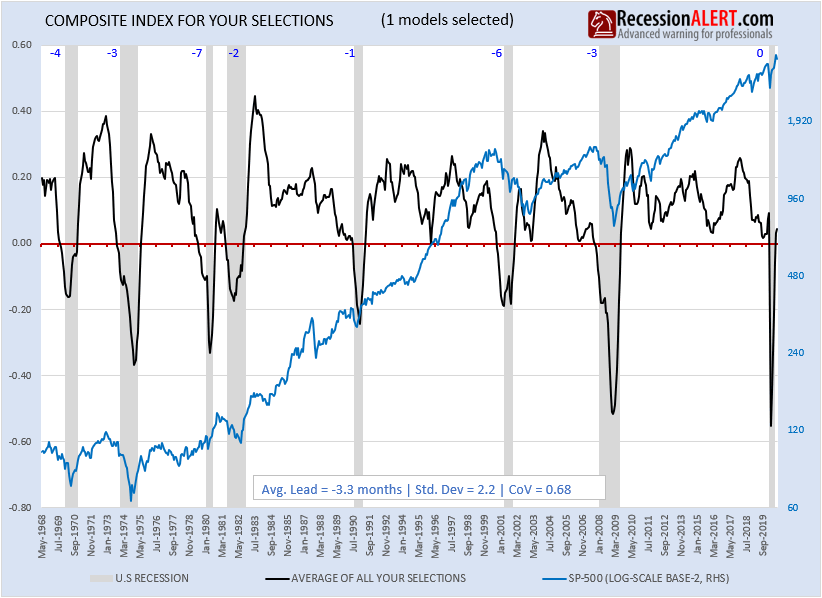
Let us examine the behavior of this index around the prior 7 recessions and then align the current 2020 vintage trough (lowest point) with the trough of the average of the prior 7 vintages to determine the most likely month we exited from recession:
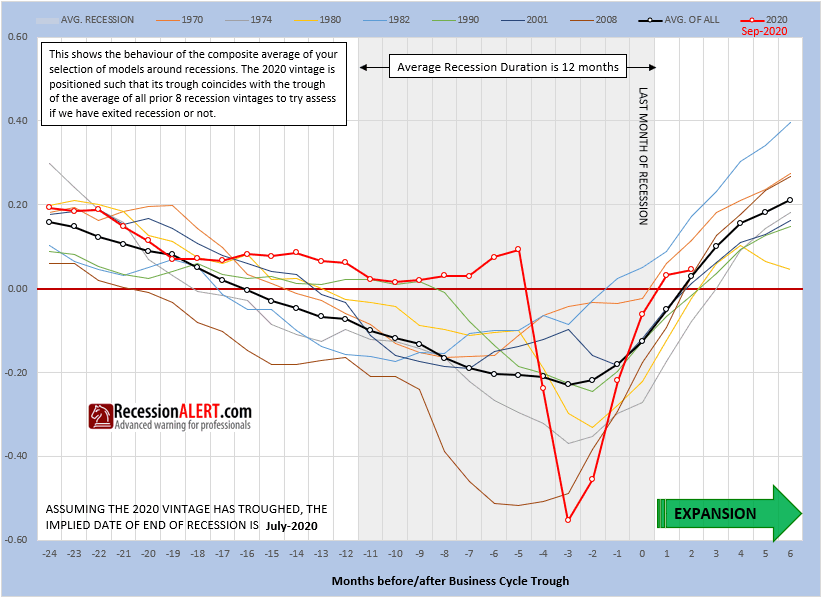
We see from the above chart (taken straight from the one produced in the RECOVERY tab) that the average of the prior 7 SuperIndex vintages troughed 3 months before the first month of the new expansion. The red line in the current SuperIndex vintage (last point representing September 2020) is aligned to this trough. This implies September 2020 represented the 2nd month of the new expansion, meaning the recession likely ended in July 2020.
NOTE : It is important to understand that the current vintage represented by the red line, is time-shifted so that its trough aligns with that of the average of the prior 7 vintages. This means its timing relationship with the current recession and prior vintages is meaningful to the right-hand-side of the trough only, and you cannot use data to the left of the trough to compare the current vintage to prior ones.
Let us repeat the exercise with our 2nd most popular leading economic index, the high-frequency US Weekly Leading Economic Index (WLEI):
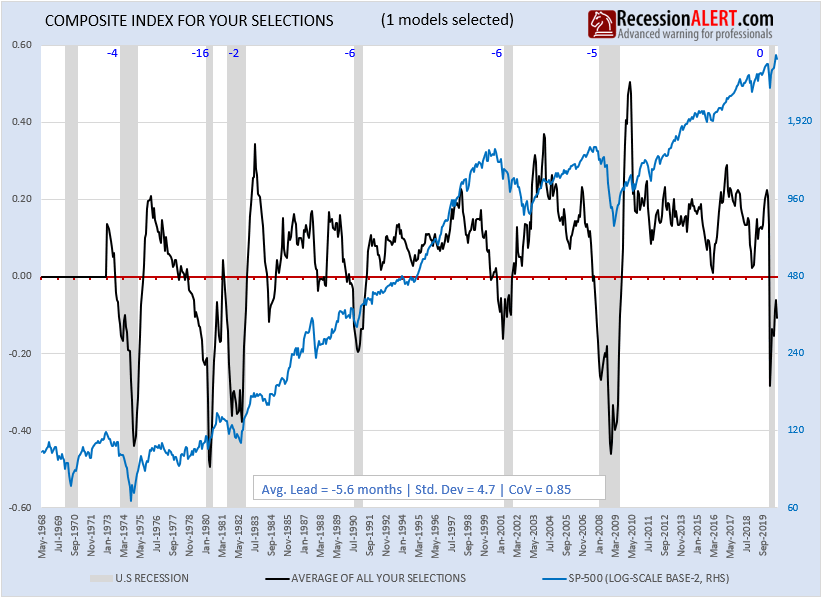
In this case using prior vintages and 2020 trough alignment to average of prior vintages, we see that the suggested last month for the recession was a month earlier, namely June 2020:
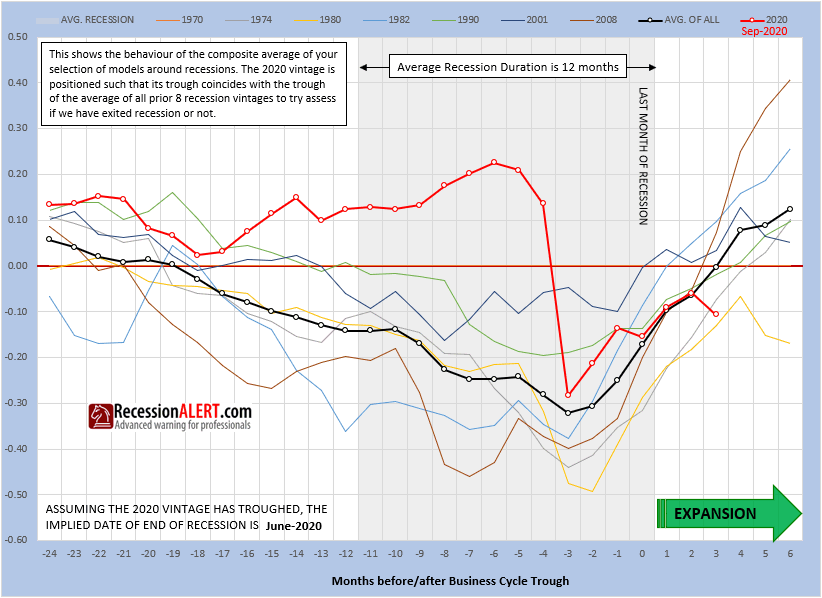
We repeat the exercise again for our third most widely followed index, the 21-factor US Monthly Leading Economic Index (USMLEI):
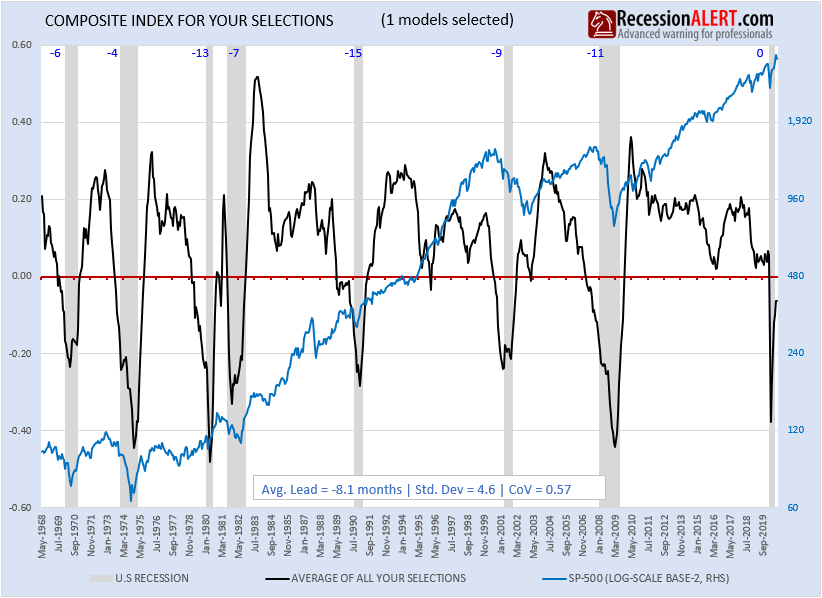
In this case using prior vintages and 2020 trough alignment to average of prior vintages, we see that the suggested last month for the recession was June 2020:
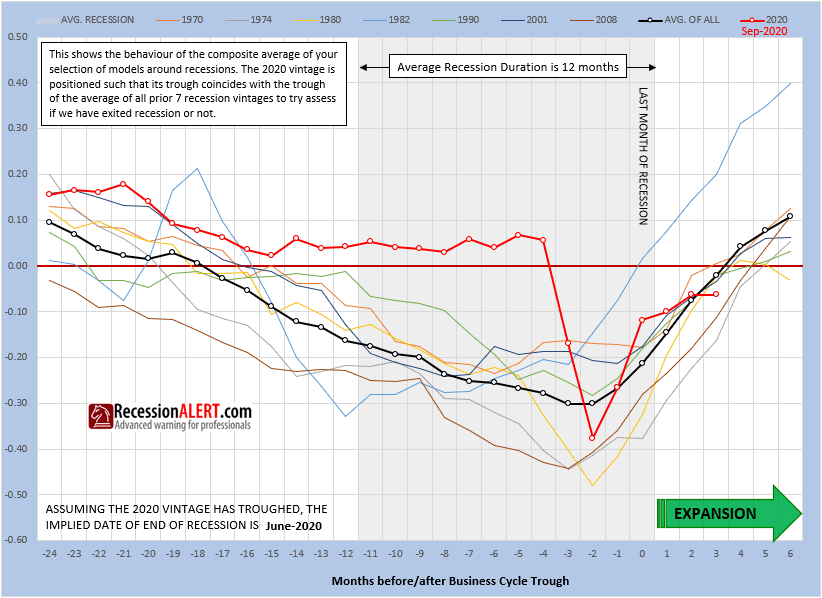
We can use the monthly data file to select any number of our 15 models, to create a composite and repeat the above exercise. For example, our Recession Forecasting Ensemble (RFE-6) consists of six different models taken from the SuperIndex report . The RFE is very widely followed by SuperIndex readers, since it has a zero false positive real-time history when using more than one model in recession as a overall recession trigger, when examined as a ensemble (a count of number of models flagging recession):
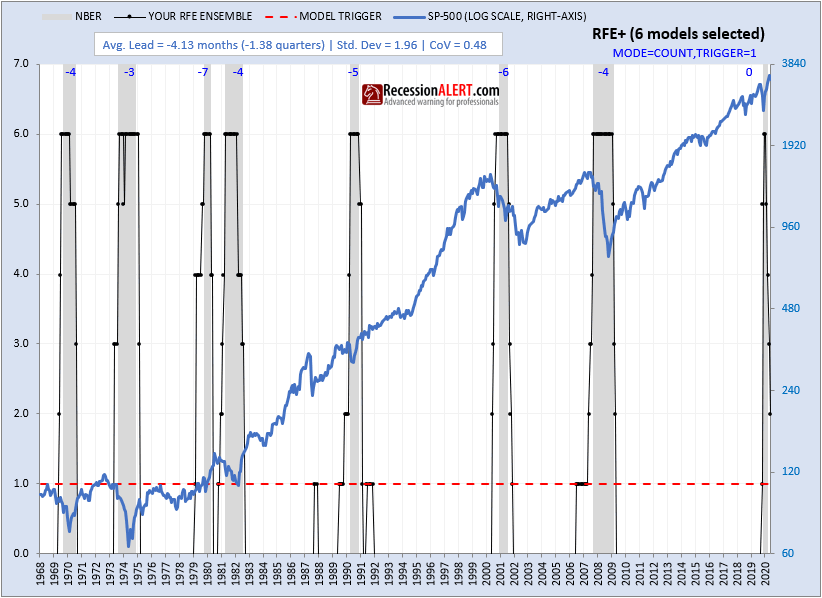
The RFE-6 is arguably our best performing model when one considers its zero false positive rate, ideal “golden” lead-time of 1.5-2 quarters (See Recession: Just how much warning is useful anyway?) and lowest coefficient of variance (high consistency of lead times):
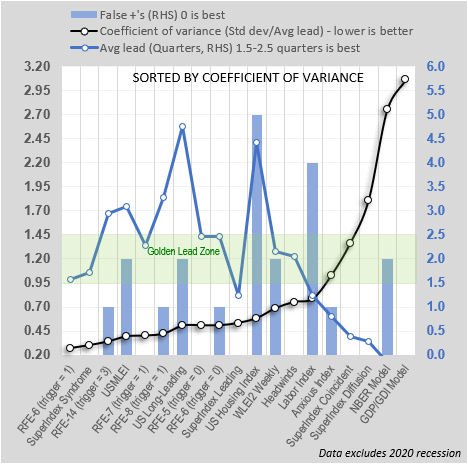
Let’s look at the RFE-6 as a single equally-weighted average of standardized components composite as opposed to an ensemble/diffusion:

In this case using prior pre-recession vintages and 2020 trough alignment to average of prior vintages, we see that the suggested last month of recession is May 2020:
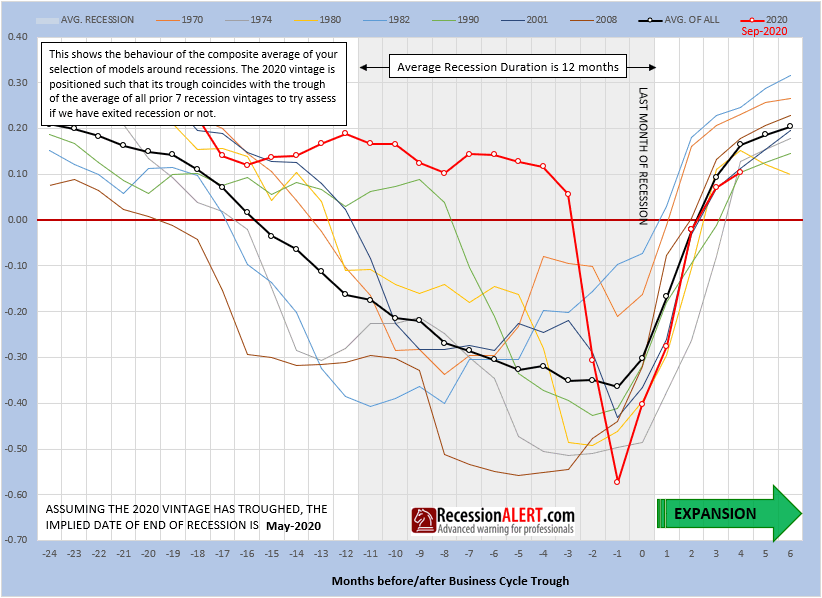
Let us finally mash up all 15 of our models together into a single super-duper composite which we call RFE-15, which encompasses 4 coincident models, 3 short-leading models, 5 medium-leading models and 3 long leading models. Here is the ensemble (or diffusion of models in recession) with optimum trigger of 3 producing the lowest coefficient of variance (CoV)
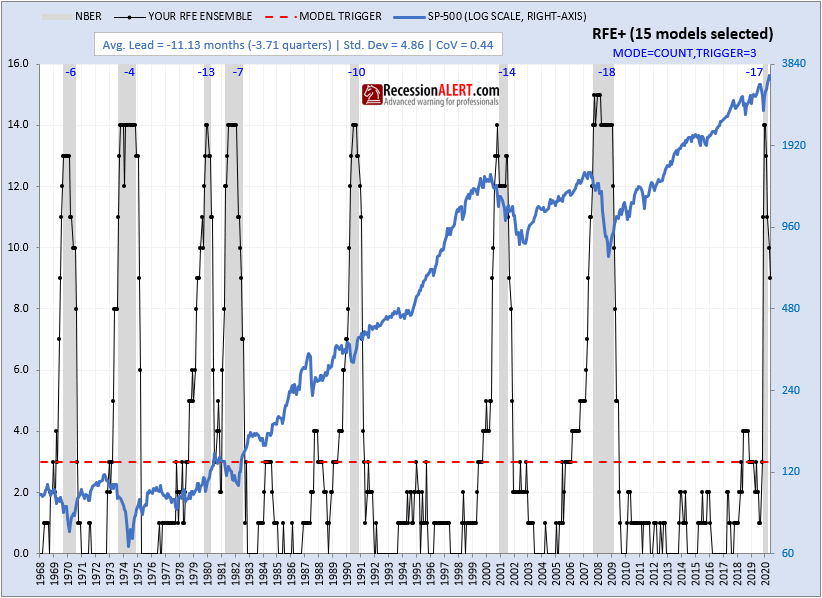
Here is the equally weighted, standardized components composite (as opposed to viewing them as an ensemble):
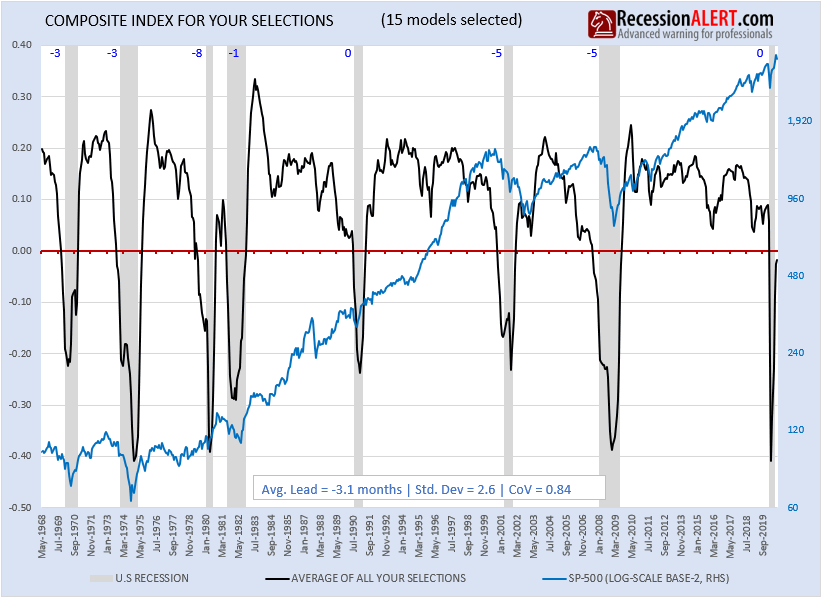
In this case using prior pre-recession vintages and 2020 trough alignment to average of prior vintages, we see that the suggested last month of recession is again July 2020:
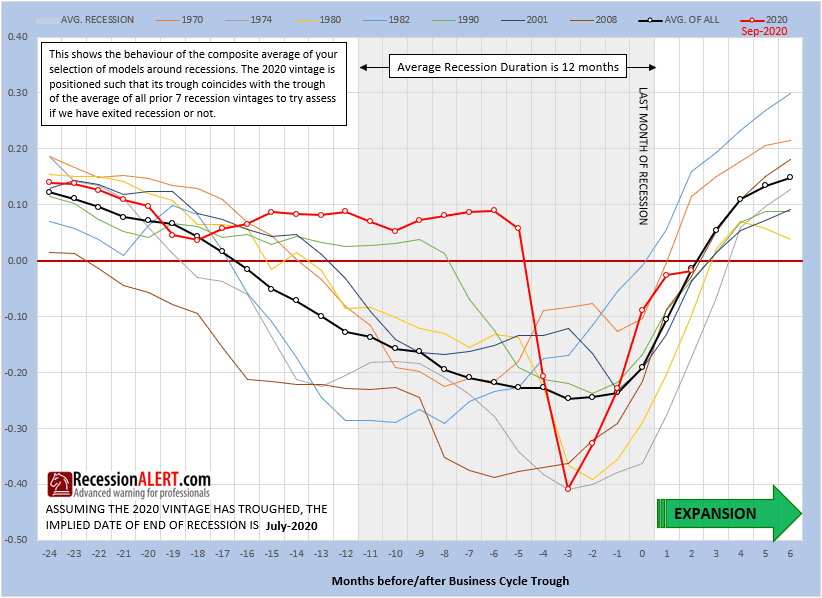
In summary, we have estimates ranging from May 2020 to July 2020 for the end of the current recession, with June 2020 the most likely candidate.
The real issue for us moving forward is not if we have emerged from recession or not, but if the recovery can maintain a steep slope and for how long the recovery can continue without faltering. All signs (here, here and here) point to a softening again of the economy in Q4-2020 and discussions of a double-dip recession may well resurface as a result.

Comments are closed.